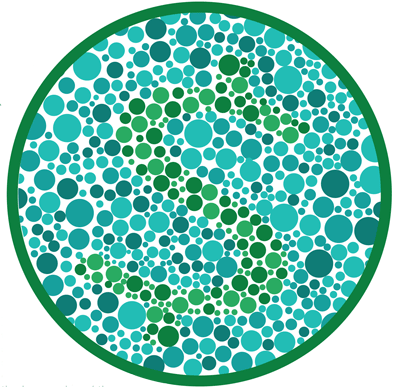 For most optometrists, net income and profit margins appear to be holding steady, while gross income may have increased slightly. Optometrists remain satisfied with their income and are not working extra hours just to make more.
For most optometrists, net income and profit margins appear to be holding steady, while gross income may have increased slightly. Optometrists remain satisfied with their income and are not working extra hours just to make more.
These are some of the results from our most recent Income Survey. This year, for the first time, the survey was conducted online.
Median Income Holds Steady
On average, our respondents (including both self-employed and employed doctors) had an estimated average net salary of $129,948 in 2006. This does not compare favorably to our last Income Survey (Income Stagnates, But Satisfaction Doesnt, July 2005), which showed an average net salary of $134,680 in 2004.
Did the average O.D.s net income actually decrease? Probably not (although it cant be ruled out). Likely, this is an affect of our survey methodology, differences in the demographics of the survey respondents, or a combination of both.
This year, we solicited survey responses by e-mail to all registered readers of Review of Optometry, and the survey itself was administered online by Jobson Optical Research. (Some 334 optometrists responded to this electronic survey.) Respondents were prompted to select from a range of income levels, and Jobson Optical Research calculated the estimate of average income.
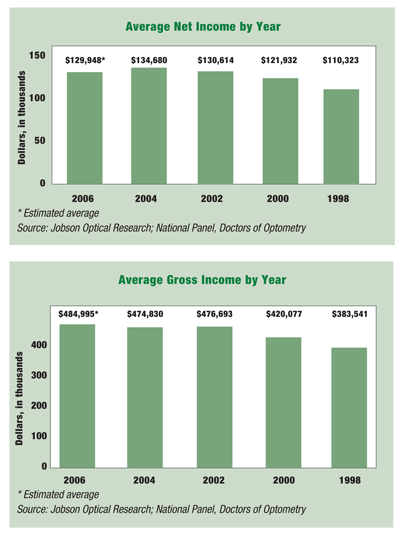
In all previous income surveys, we sent the survey form by
Income for self-employed doctors (those in private practice, partnerships, groups or franchises) held steady, according to our survey. Average estimated net income for self-employed doctors was $140,812 in 2006, compared with $140,540 in 2004.
However, either extremely high or low salaries may skew average income. So, median incomethe midpoint of all income responsesmay provide a better snapshot of the typical O.D.s salary. Median net income for self-employed doctors was $125,000 in 2006, compared with $120,060 in 2004, which is an increase of 4.1%, our latest survey found.
Then again, inflation rose a little more than 6% over the same period (based on the U.S. Consumer Price Index), so many self-employed optometrists have effectively lost net income since 2004. Actually, theyve lost income since 2002, as median income has been flat between the 2002 and 2004 surveys.
For doctors who are employed (by another doctor, by a commercial firm, by an HMO or PPO or in other employment), our survey found that estimated average net income was $104,525 in 2006, with a median income of $105,000.
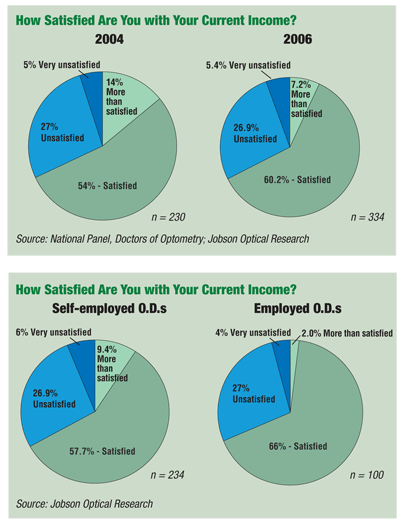
Gross Gets Goosed
According to our current survey, gross revenues have increased since 2004. Estimated average gross revenue (for both employed and self-employed O.D.s) was $484,995 in 2006, compared with $474,830 in 2004. Gross revenues had been flat between 2002 and 2004.
For self-employed doctors, estimated average gross revenue was $515,598 in 2006, while estimated average gross revenue for employed doctors was $413,250.
Another key indicator of a practices economic health, profit margin, is defined as net income as a percentage of gross revenue (i.e., net income/gross revenue). Among optometrists as a whole, their profit margin dipped just slightly: 26.8% in 2006, compared with 28.4% in 2004. This rate has held fairly steady, hovering around 28% since Review of Optometry started tracking profit margin in 1998. Realize that this is the combined profit margin of all respondents. Individual profit margins undoubtedly vary widely.
Among self-employed optometrists as a group, profit margin was 27.3% in 2006. Among employed optometrists, profit margin was 25.3% in 2006.
More than half (55%) of all respondents say that their net held steady as a percentage of gross in 2006, while more than one in four doctors (27.5%) say that their net increased as a percentage of gross.
Doctors had various reasons for achieving an increase; all involved some type of improvement in their practices. Some of those improvements include reducing expenses and cost of goods sold, increasing medical billing, raising fees, increasing efficiency, adding new equipment, and being choosier with frame purchases. Several doctors in established practices attributed their greater profit margin to dropping insurance plans, while some doctors in newer practices attributed it to adding insurance plans.
Our office is making more money, so Im paying myself more to offset taxes, says one fortunate optometrist from
Interestingly, optometrists continue to be satisfied with the dollars theyre earning. More than 67% of doctors say they are satisfied or more than satisfied with their income, which is nearly the same level of income satisfaction as our 2004 survey (68%) and our 2002 survey (67%).
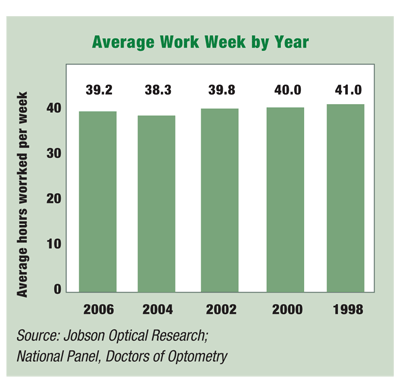 One interesting point: Employed optometrists are just as satisfied with their income (68%) as their self-employed colleagues (67%). My family can live comfortably with this income, says Karen Gebhardt, O.D., who works at
One interesting point: Employed optometrists are just as satisfied with their income (68%) as their self-employed colleagues (67%). My family can live comfortably with this income, says Karen Gebhardt, O.D., who works at
Of course, most optometrists would like to earn more, but are nevertheless satisfied with their current income. I feel I make a good income with just over nine years in practice, says Evan Pritchett, O.D., who has a private practice in
Indeed, most private practitioners surveyed (59%) expect their net income to increase in 2008. Only about half this number expect their net income to stay the same (29%), and only a small number (6.6%) expect it to decrease.
Time Well Spent
Although most O.D.s hope their net income will rise or at least stay the same, most O.D.s also dont choose to work more hours to bring in extra pay. The average O.D.s work week seems to have hit a plateau after almost a decade of becoming incrementally shorter. This years survey found that the average O.D. works 39.2 hours per week. Compare that with 39.8 hours in 2002, 40 hours in 2000 and 41 hours in 1998.
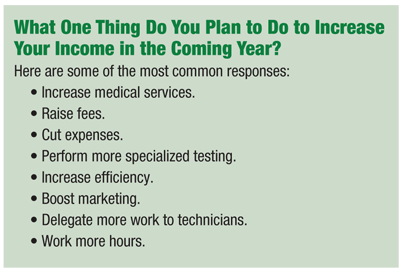 Most of my needs are met, says one optometrist. Im unwilling to spend additional hours for more money.
Most of my needs are met, says one optometrist. Im unwilling to spend additional hours for more money.
On average, self-employed doctors dont spend much more time at work than their employed counterparts; self-employed O.D.s average 39.4 hours per week compared with employed O.D.s, who clock in at 38.6 hours.
Ideas for Improvement
Of course, theres always room for improvement. How do O.D.s plan to do better next year?
See more patients, says optometrist Kerry Reeves, of
Network in the community, says Melissa Webb, O.D., of
Perform more medical services, says Raj Patel, O.D., of
Delegate more to associates and staff, says Robert Prazer, O.D., of

